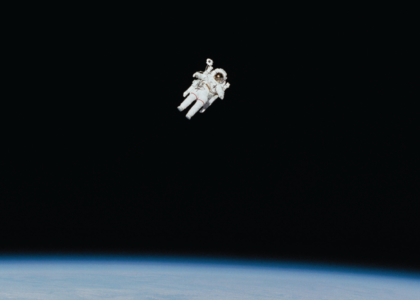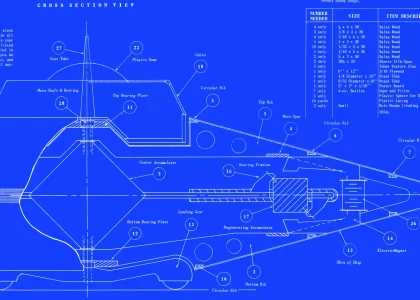Introduction
This post contains information referenced by my team when we were actively discussing solutions and designs for an operable OTC-X1 spacecraft or flying saucer. From this material, a few theories were formed. Not all were explored. I’m sharing this information so that those of you who wish to join a team may start your own.
As long as I’m on that subject, I’ll briefly say that I can count on one hand the number of people who are serious about OTC-X1 research. In other words, there are no “pods” to join in your area. From my perspective, if you want to do this, you must build your own team. Good luck.
OTC-X1 Flying Saucer by Walter Nowosad | Redbubble
Dr. Paul Laviolette – Propulsion Systems
Paul LaViolette describes how the Biefeld-Brown Effect may be used for B2 bomber propulsion. He also describes its over-unity properties.
Dr. Paul LaViolette at the Secret Space Program Conference, 2015, Bastrop, TX
In terms of efficiency, compared to a jet engine, the effect is many tens of thousands of times over-unity, which is influenced by the selection of high K factor dielectrics and the application of extremely high voltage Referencing a few other T. T. Brown Patents, Dr. LaViolette asserts the B2’s jet engines could be turned off; and it would continue to operate without fuel. The effect is based on sub-quantum kinetics. It violates our known laws of physics; and it may function in the vacuum of space without fuel.
Study of Gravity | Presentation by Mike Gamble
In 2009, Michael Gamble presented his Study of Gravity at the Space Propulsion and Energy Science International Forum (SPESIF). In 2010, this presentation was granted Public Domain release by Boeing. The written release appears in writing at the beginning of the attached presentation decks.
In Part 2, you’ll find the “Tesla Drive”. Note the square shape of the armature. Rotate it 45 degrees; and, you’ll have a UTRON motor. The “Tesla Drive” was one option my team was exploring.
Gamble also references a Linear Induction Motor, flattened. Instead of a rectangle, envision it as a circle and apply it to the OTC-X1. The spokes of the wheel (Carr’s Accumulator Frame) would alternate N, S, N, S (Capacitor plate, UTRON, Capacitor Plate, UTRON . . .) just as illustrated on page in the presentation deck.
The History of Electrogravitics | by Thomas Valone
Some years ago, I saw an episode of the TV Series Myth Busters, where the hosts of the show examined lifters and tested one in a vacuum chamber. Their conclusion – thrusters generate ion wind propulsion, which can’t work in the vacuum of space.
Until I read Thomas Valone’s The History of Electrogravitcs, I allowed the results of Myth Busters’ vacuum-test on ionocraft represent science and the final word on The Biefeld-Brown Effect. Shame on me for trusting an entertainment company to influence my thinking. For years, I had exclusively associated The Biefeld-Brown Effect to lifters and with their accompanying electrohydrodynamic (EHD) phenomenon (thrust in air). One of my team members shared the Valone’s paper with me, and after reading it, I reassessed my comfortable opinion. It seems The Biefeld-Brown Effect was proven to operate in a vacuum decades ago. In any case, I’d still like to see it.
Related U.S. Patents
P. DE SEVERSKY
THOMAS TOWNSEND BROWN
Electrokinetic Apparatus US2949550 – motors
Electrokinetic Transducer US3018394 – Transducers other than those covered by groups H04R9/00 – H04R21/00 using ionized gas
Electrokinetic Generator US3022430 – Generators in which thermal or kinetic energy is converted into electrical energy by ionization of a fuel and removal of the charge therefrom
Electrokinetic Apparatus US3187206 – using plasma to produce a reactive propulsive thrust
What does NASA Say?
Asymmetrical Capacitors for Propulsion – NASA/CR—2004-213312, OCTOBER 2004
What did NASA’ Scientific and Technical Information (STI) Program Office, operated by Langley Research Center and the Lead Center for NASA’s scientific and technical information, conclude about Asymmetrical Capacitor Thrust (ACT) based on the patents of T. T. Brown and P. De Seversky and others?
Their conclusions align with the Myth Busters episode, I’d mentioned earlier. In part, they write:
“…In spite of decades of speculation about possible new physical principles being responsible for the thrust produced by ACTs and lifters, we find no evidence to support such a conclusion. On the contrary, we find that their operation is fully explained by a very simple theory that uses only electrostatic forces and the transfer of momentum by multiple collisions…”
Before we jump to reciting the oh-so-popular NASA mantra made famous by every conspiracy theorist walking the face of God’s green Earth – Never A Straight Answer – I don’t doubt the veracity of their math and conclusion based on the limited scope, setup, and test conditions of their experiments – in and out of a vacuum.
Here’s what I find interesting.
They applied the maximum voltage they had available – 34 to 50 KV, which is consistent with voltages applied to lifters ordered from the Internet. What’s missing are fine details: Is it AC or DC? Given statements made in the paper where no specifics about the signal applied to their circuits was given (voltage values, frequencies, and waveforms); and since they sought to eliminate incidental Trichel Pulses by placing their devices in Argon gas; I have to assume they used a constant DC signal.
While they duplicated elements of T. T. Brown’s and P. De Seversky’s patents in their tests to produce ion thrust – and from their paper, you’ll find the “thrust” of their research focuses on the force of ions on air – it seems they neglected at least one vital test condition, which may have produced other interesting results had they applied it: pulsed DC.
T. T. Brown observed his Asymmetric Capacitors would rise temporarily, then fall. To maintain the effect, he PULSED the charge!
NASA scientist’s visual observations of temporary and limited motion of their devices reveals their unawareness of Beifeld-Brown’s solution to pulse the DC charge to produce a consistent effect.
“…All tests were performed by increasing the voltage slowly and observing the resulting motion. Generally, some motion (less than a tenth of a rotation) would be observed … and then after a significant further increase in voltage rotation would begin again…”
How they failed to put their observations together and enhance their test conditions by pulsing a DC charge is beyond me. Perhaps – as the title of their paper implies – the primary focus of the research was to examine ion thrust aspects in an atmosphere, rather than to risk revealing subquantum kinetic aspects of The Beifeld-Brown Effect that can’t be explained by Newton’s laws or minuscule ion propulsion forces.
The geometry of NASA’s test devices also reveals their “thrust“. There’s no comparison between their totally tubular devices (analogous to jet engines and rockets) and Brown’s circular airfoils. As I wrote earlier in this section, I don’t doubt the veracity of NASA’s conclusions. They clearly exhibit a laser-like focus on ion propulsion. I’d simply hoped to see a broader scope of testing and a more thorough examination of The Biefeld-Brown Effect, as described in the resources listed on this page. If such tests have been conducted and reported by NASA’s STI Program Office, I’ve not yet found them.




